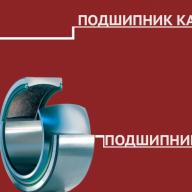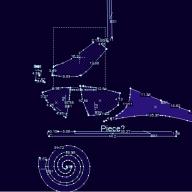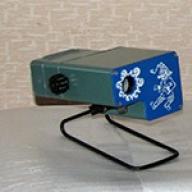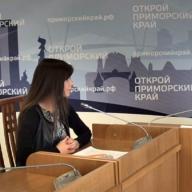Practical work No. 2. Information resources of the society.
Objective: learn to use educational information resources, search for the necessary information with their help, master the methods of working with software.
Work plan:
1. Get acquainted with the theoretical part
2. Give examples using properties.
3. Answer questions
Equipment:
IBMPC
Theoretical part
The concept of "information resource of society" (IRO) is one of the key concepts of social informatics.
Informational resources - this is knowledge prepared for the appropriate social use.
IRO in the narrow sense of the word is knowledge that is already ready for expedient social use, that is, alienated from the carriers and materialized knowledge.
IRO in the broad sense of the word includes all knowledge that is alienated from carriers and included in the information exchange, existing both in oral and in materialized form.
The concept of a resource is defined in the dictionary of the Russian language by S.I. Ozhegova as a reserve, a source of something.
As for information resources, this concept is relatively new. It is still just beginning to enter the life of modern society, although in recent years it has become more and more used not only in scientific literature, but also in social and political activity. The reason for this, of course, is the global informatization of society, in which the especially important role of information and scientific knowledge is becoming increasingly recognized.
The following most important parameters are used to classify information resources:
subject of information stored in them;
form of ownership - state (federal, subject of the federation, municipal), public organizations, joint-stock, private;
availability of information - open, closed, confidential;
belonging to a certain information system - library, archival, scientific and technical;
source of information - official information, publications in the media, statistical reporting, results of sociological research;
purpose and use of information - massive regional, departmental;
form of information presentation - text, digital, graphic, multimedia;
media type
information - paper, electronic.
Under educational information resources understand textual, graphic and multimedia information, as well as executable programs (distributions), that is, electronic resources created specifically for use in the learning process at a certain level of education and for a certain subject area.
When working with educational resources, such concepts as the subject and object of these resources appear. Subjects of information activity are classified as follows:
a subject that creates objects (all users of the educational system - teacher, student);
subject using objects (all users of the educational system);
a subject that administers objects, that is, provides an environment for working with objects of other subjects (network administrators);
a subject that controls the use of objects by subjects (engineers).
Educational electronic resources include:
educational materials (electronic textbooks, teaching aids, abstracts, diplomas),
educational and methodological materials (electronic methods, educational programs),
scientific and methodological (dissertations, candidate works),
additional text and illustrative materials (laboratory work, lectures),
testing systems (tests - electronic knowledge check),
electronic full-text libraries;
electronic periodicals in the field of education;
electronic tables of contents and abstracts of articles of periodicals in the field of education,
electronic archives of issues.
Practical part
Exercise 1. Give examples:
a) reliable, but biased information;
b) objective but unreliable information;
c) complete, reliable, but useless information;
d) irrelevant information;
e) relevant but incomprehensible information.
Task 2. Using the Universal Reference Encyclopedia, find answers to the following questions:
1) What is WWW?
2) Who was the developer of the first computer?
3) When is World Information Day?
4) Who is K.E. Tsialkovsky? The years of his life. Place of work.
5) Date of the first Olympic Games.
6) Mycenaean culture
7) When was the Trojan War?
Task 3.
Write down the answers to the questions:
1) What are information resources?
2) What are educational information resources?
3) What is related to educational information resources?
The work of students with a book, textbook, reference, popular science and educational literature in didactics is considered one of the most important teaching methods. At present, electronic publications and resources can be fully added to these sources. The main advantage of this method is the ability for the student to repeatedly process educational information at an accessible pace and at a convenient time. Educational literature and multimedia tools successfully perform all didactic functions: teaching, developing, educating, motivating, control and correctional. The most widespread are two types of work with information resources: in the classroom, under the guidance of a teacher and independent work in order to consolidate and expand knowledge.
The method of working with educational literature and OEI is effectively used in school. However, in the context of the information explosion, the value of educational literature has to be revised all the time.
For the rapidly developing information technologies of the Internet, this problem becomes extremely urgent. In addition, the commercialization of the Internet contributes to the “dumping” of low-quality printed products into the market. This situation puts the teacher in front of a big problem: what information resources to rely on when presenting educational material, what to recommend to students for independent study and consolidation of knowledge.
Another important factor is that modern hypermedia technologies implemented on the Internet make it possible to interconnect disparate multimedia information located on various servers, to structure it, thereby creating an integral information resource, the size of which may not be limited.
Thus, the task of the teacher using the information resource method is to select the necessary resources and orient schoolchildren in them.
The main differences of this method from standard methods of programmed teaching and method of working with literature are as follows:
used OER are located on various servers on the Internet;
the number of information resources and connections between them can be practically unlimited;
the system for presenting information using hypertext allows the student to find their own trajectory for passing the educational material, deepen and expand knowledge at their will and capabilities;
hypermedia technologies used on the Internet allow, if necessary, to embed illustrations, animation, videos, and voice information into educational material.
The main purpose of using the information resource method is to consolidate and expand theoretical knowledge by orienting the student in a huge amount of the most diverse information that he needs and satisfies his cognitive needs.
The student's activity when using the information resource method is controlled by the teacher - this is the communication of specific knowledge, the collection and systematization of information resources in order to consolidate and expand knowledge, as well as control the students' knowledge. This determines the teaching and control activity of the teacher.
The disadvantages of the information resource method include a significant amount of time both on the part of the teacher associated with the collection and structuring of the OEI, an increased requirement for the quality of ICT tools used in the learning process, the uniformity of resources (similar interface and navigation), and on the part of the student: navigation, viewing, reading, etc.
A fairly effective teaching method, the implementation of which is advisable using ICT tools, is a didactic game. There are several rather important features that must be taken into account when using the method of games in informatized teaching of schoolchildren. When organizing a game in a lesson using ICT tools, it is important to think about the pace at which it will be conducted. The game should be dynamic, therefore lengthy explanations and an abundance of disciplinary comments are unacceptable. It is necessary to have a good command of the methodology of conducting game exercises, to clearly understand their purpose, to maintain a certain pace, presenting the students with a relatively large independence.
Didactic games conducted with the use of ICT tools can solve various educational problems. Some games help form and practice students' skills of control and self-control. Others, based on material of varying degrees of difficulty, make it possible to implement a differentiated approach to teaching schoolchildren with different levels of knowledge.
Through the game, the student learns the world around him and himself, learns to analyze, generalize, compare. Visibility, presented in a playful way, contributes to the concretization of the material being studied. The game technique used in the lessons should be in close connection with the ICT tools used, with the topic of the lesson, with its tasks, and not be exclusively entertainment in nature.
The game stimulates the formation, along with partnerships, of a sense of inner freedom, a sense of friendly support and the ability to provide assistance to your partner if necessary, which contributes to the rapprochement of the participants, deepens their relationship.
The game allows you to soften the manifestation of the authoritarian position of the teacher, equalizes the rights of all participants. This is very important for gaining social experience, including relationships with adults. The presence of certain game restrictions develops the player's ability to arbitrarily regulate activities based on the subordination of behavior to a system of rules governing role performance. In the game, the child is faced with a whole set of different rules that he needs to understand, consciously accept, and in the future, despite the difficulties simulated in the course of the game, strictly follow.
A schoolchild, starting from elementary school, has a clearly defined game deficit - if he wants to play, the child does not find an opportunity to satisfy this desire in the classroom. Therefore, giving the student the opportunity to participate in a series of role-playing and business games, the teacher activates him, changes the child's motivation to personally significant.
In high school, playing with information and communication technologies is seen as an opportunity for students to test their strength and readiness for real life after graduation. The greatest opportunity for this is provided by business games. The content side of the game brings the participants to life. The game allows the participants to "make mistakes" and, by analyzing them, to see the causes and consequences of such actions. This fully meets the needs of schoolchildren to “be adults”.
Practical work No. 1. Information resources of the society. Educational information resources. Working with software.
Purpose of work: to learn how to use educational information resources, to search for the necessary information with their help, to master the methods of working with software.
Theoretical part
The concept of "information resource of society" (IRO) is one of the key concepts of social informatics.
Information resources are knowledge prepared for appropriate social use.
IRO in the narrow sense of the word is knowledge that is already ready for expedient social use, that is, alienated from the carriers and materialized knowledge.
IRO in the broad sense of the word includes all knowledge that is alienated from carriers and included in the information exchange, existing both in oral and in materialized form.
The concept of a resource is defined in the dictionary of the Russian language by S.I. Ozhegova as a reserve, a source of something.
As for information resources, this concept is relatively new. It is still just beginning to enter the life of modern society, although in recent years it has become more and more used not only in scientific literature, but also in social and political activity. The reason for this, of course, is the global informatization of society, in which the especially important role of information and scientific knowledge is becoming increasingly recognized.
The following most important parameters are used to classify information resources:
subject of information stored in them;
form of ownership - state (federal, subject of the federation, municipal), public organizations, joint stock, private; availability of information - open, closed, confidential;
belonging to a certain information system - library, archival, scientific and technical;
source of information - official information, publications in the media, statistical reporting, results of sociological research;
purpose and use of information - massive regional, departmental;
form of information presentation - text, digital, graphic, multimedia;
media type
information - paper, electronic.
Educational information resources are understood as textual, graphic and multimedia information, as well as executable programs (distributions), that is, electronic resources created specifically for use in the learning process at a certain level of education and for a certain subject area.
When working with educational resources, such concepts as the subject and object of these resources appear. Subjects of information activity are classified as follows:
a subject that creates objects (all users of the educational system - teacher, student);
subject using objects (all users of the educational system);
a subject that administers objects, that is, provides an environment for working with objects of other subjects (network administrators);
a subject that controls the use of objects by subjects (engineers).
Educational electronic resources include:
educational materials (electronic textbooks, teaching aids, abstracts, diplomas),
educational and methodological materials (electronic methods, educational programs),
scientific and methodological (dissertations, candidate works),
additional text and illustrative materials (laboratory work, lectures),
testing systems (tests - electronic knowledge check),
electronic full-text libraries;
electronic periodicals in the field of education;
electronic tables of contents and abstracts of articles of periodicals in the field of education,
electronic archives of issues.
Practical part
Task 1. Give examples:
1) reliable but biased information;
2) objective but unreliable information;
3) complete, reliable, but useless information;
4) irrelevant information;
5) relevant but incomprehensible information.
Task 2. Using any search engine, supplement the table with the found Internet resources in accordance with your professional interests.
Type of Internet resource Type of Internet resource Examples of Internet resources
Training materials 1.1. Textbook, tutorial 1.2. Electronic training course 1.3. Lecture text 1.4. Laboratory workshop 1.5. Problem book 1.6. Test, control questions Reference materials 3.1. Encyclopedia 3.2. Dictionary 3.3. Reference 3.4. Database 3.5. Geographic information / cartographic system Task 3. Using the Universal Reference Encyclopedia, find answers to the following questions:
1) What is WWW?
2) Who was the developer of the first computer?
3) When is World Information Day?
4) Who is K.E. Tsialkovsky? The years of his life. Place of work.
5) Date of the first Olympic Games.
6) Mycenaean culture
7) When was the Trojan War?
Task 4.
Write down the answers to the questions:
1) What are information resources?
2) What are educational information resources?
3) What is related to educational information resources?
Task 5.
Working with the test program MY TEST
Attached files
Computer science. Laboratory work "Working with information and educational resources"
Laboratory work
Topic: Working with information and educational resources
Objective:Get acquainted with the main information and educational resources. Learn to use Internet resources for the optimal search for educational and special information, taking into account the specifics of the tasks.
Software tools used: Internet Explorer browser (or equivalent), search engines, MS Word.
know
Informational resources societies are resources accumulated in a form that allows their reproduction for society, man. These are resources that carry information: books, articles, dissertations, research and development documentation, all kinds of databases and knowledge bases, technical translations, museum collections, ancient manuscripts, archaeological finds, works of art, library funds and archives, cinema -, photo-, audio materials, including audiobooks, and, of course, materials from newspapers, magazines, TV shows, radio programs, etc.
Unlike all other types of resources (labor, energy, minerals, etc.), information resources grow the faster the more they are spent. Distinctive feature and value the bulk of information resources - their availability for ordinary users. Everyone can become a user of these resources.
Of course, modern information resources include those that are stored in electronic form.
Humanity seeks to preserve its information resources in digital form, then they can be used with the help of computers. All types of information resources, both in material and electronic form, can be called "long-term memory of mankind."
In many information resources, a significant place is occupied by information educational resources... These include educational books, dictionaries, encyclopedias, atlases, maps, various manuals, etc.
However, in connection with the progress in the field of computer technology, new forms of presentation of educational information have appeared. In addition to traditional educational products, bookstores widely present computer software used in the educational process, various training materials on CD containing training, monitoring and demonstration programs for almost all educational sections; e-books, dictionaries-translators, electronic encyclopedias the volume of which is hundreds of times larger than the paper encyclopedia, various legal guides (DB) on disks and on the Internet. The same resources on the Internet allow you to use information from them in online mode , i.e., direct access mode.
Educational collections are being developed in the countries of the world. digital educational resources... For the convenience of access to them in Russia, a portal (entrance) to all educational sites has been organized through a single window http://window.edu.ru on the state educational portal www.edu.ru.
In recent years, a special place in information resources began to occupy e-books, a distinctive feature of which is the use of the technology of hyperlinks, which allows you to go directly to various parts of the book in the established places of the electronic text (links).
Electronic Libraries in the system of information educational resources have become an integral part of life - these are not only files on a computer disk or materials on CDs, but also materials on library sites on the Internet.
Exercise 1.
Using the site "Single Window" - http://window.edu.ru/, make a list of links to the resources www.fcior.edu.ru (sections of the open source software) that are directly related to training in your future profession (Table 1).

Figure 1 - Site "Single Window"
Table 1
| Web page addresses | Site title | Purpose or explanation of their content |
| http://www.edu.ru/abitur/act.11/index.php | Specialties of the vocational education system (VET). This section will help you learn from the current SPE standards about the requirements for graduates in the chosen specialty, the totality of knowledge, skills and abilities acquired in the course of training. |
Task 2.
Make a table links to library sites region (5 or more links) in which you live using the Internet. Parameters: title, location, official site or page.
Task 3.
Pick up collection of works favorite artist (3 or more paintings), using the electronic exhibition on the website of the Tretyakov Gallery Museum (http://www.tretyakovgallery.ru/). Parameters: author, title, year, materials, owner or storage location.
Task 4.
Make a translation several phrases online, using the website of the computer translator Promt (http://www.promt.ru/).
Task 5.
Find education Act using the portal of Russian education www.edu.ru. Provide a link to the page with the law.
Reflect the search results in a report created in a text editor MS Word under the name:
« Working with information and educational resources_group_FIO ".
Send the result of the work to the teacher's e-mail box . When sending a message in the field " Subject»Indicate: the topic of the laboratory work, your group and full name.
Goal:learn to use educational information resources, search for the necessary information with their help; master the methods of working with software.
Theoretical information for laboratory work
The concept of "information resource of society" (IRO) is one of the key concepts of social informatics. The widespread use of this concept began after the publication in 1984 of the book by G.R. Gromov. "National information resources: problems of industrial exploitation".
“An information resource is knowledge presented in a project form” - such a short and insufficiently strict definition was proposed by Professor Yu.M. Kanygin.
Thus, information resources are knowledge prepared for appropriate social use.
The concept of IRO accumulated in the knowledge society can be considered in the narrow and broad sense of the word.
IRO in the narrow sense of the word is knowledge that is already ready for expedient social use, that is, alienated from the carriers and materialized knowledge.
IRO in the broad sense of the word includes all knowledge that is alienated from carriers and included in the information exchange, existing both in oral and in materialized form.
Concept resourcedefined in the Dictionary of the Russian language S.I. Ozhegova as a reserve, a source of something.
As for information resourcesthen this concept is relatively new. It is still just beginning to enter the life of modern society, although in recent years it has become more and more used not only in scientific literature, but also in social and political activity. The reason for this, of course, is the global informatization of society, in which the especially important role of information and scientific knowledge is becoming increasingly recognized.
For classification of information resources the following most important parameters can be used:
subject of information stored in them;
form of ownership - state (federal, subject of the federation, municipal), public organizations, joint-stock, private;
availability of information - open, closed, confidential;
belonging to a certain information system - library, archival, scientific and technical;
source of information - official information, publications in the media, statistical reporting, results of sociological research;
purpose and use of information - massive regional, departmental;
form of information presentation - text, digital, graphic, multimedia;
type of information carrier - paper, electronic.
By educational information resources, we mean textual, graphic and multimedia information, as well as executable programs (distributions), that is, electronic resources created specifically for use in the learning process at a certain level of education and for a certain subject area.
When working with educational resources, concepts such as subjectand an objectthese resources. We will classify the subjects of information activity as follows:
a subject that creates objects (all users of the educational system - teacher, student);
subject using objects (all users of the educational system);
an entity administering objects, that is, providing an environment for working with objects of other entities (network administrators);
a subject that controls the use of objects by subjects (engineers).
Educational electronic resources include:
educational materials (electronic textbooks, teaching aids, abstracts, diplomas),
educational and methodological materials (electronic methods, educational programs),
scientific and methodological (dissertations, candidate works),
additional text and illustrative materials (laboratory work, lectures),
testing systems (tests - electronic knowledge test),
electronic full-text libraries;
electronic periodicals in the field of education;
electronic tables of contents and abstracts of articles of periodicals in the field of education,
electronic archives of issues.




